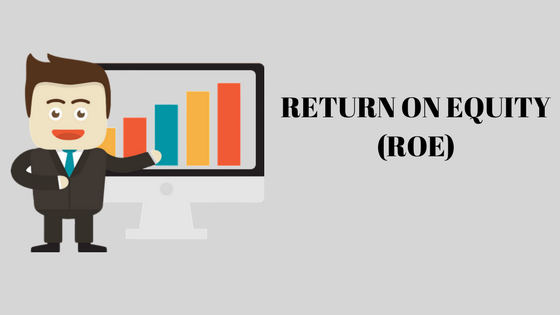Return on Equity – The most important parameter

Suppose there are two restaurants in the same locality. You have the option to invest in any one of them. With 100 investments, Restaurant A is generating profit of 30. Restaurant B is making a profit of 200 with 1,000 investments. Considering the other parameters remain same, as an investor in which business do you prefer?
In absolute terms, the second one reported a better profit. However, the first one is more efficient. The former invested 100 and made a profit of 30 so if they invest 1,000 they will end up with a profit of Rs-300. In simple language, we can say, “Restaurant A” has Return on investment of 30% while the “Restaurant B” has 20%. So, “Restaurant A” will naturally become the preferred choice for investors.
Similarly, before investing in any stock, you need to consider the efficiency of the underlying business. Return on equity helps us to determine the efficiency of management.
Return on Equity is the amount of net income returned as a percentage of shareholders equity. It is expressed as a percentage and calculated as -
turn on Equity (ROE) = Net Income/Shareholders Equity
It measures the profitability of any firm by revealing how much profit a company generates from their shareholders money. The good part is that you don't have to memorize the definition of Return on Equity. You are not going to appear for MBA examination. It is also not required to learn how you can calculate it because you are not going to any job in an accountancy firm. The calculated ROE is readily available on many financial websites so you don't have to take the pain every time to figure it. Your focus is to interpret the numbers. You need to find out what this number is saying. Just memorize the above example of two restaurant business. From that comparison, you can find that better the ROE, better is for investors. Considering other parameters remain same, ROE of 18% is better for investors than the ROE of 12%.
There are wide ranges of applications of Return on Equity numbers. You will find in the later part of this book, we are using it to evaluate debt situation and management evaluation. Personally, I prefer stocks with ROE of more than 20%. I never invested in stocks having ROE of less than 20%. Now the question comes, what makes the company report higher ROE? The answer lies in the term "economic moat”.
We will discuss this in our next Blog.....
✅ @pradeeparora, enjoy the vote!
Have you claimed your FREE Byteballs yet? Check out this post on how you can get $10-80 just for having a Steem account: https://steemit.com/steem/@berniesanders/get-free-byteballs-today-just-for-having-a-steem-account-usd10-80-in-free-coins
Thanks I have already done it